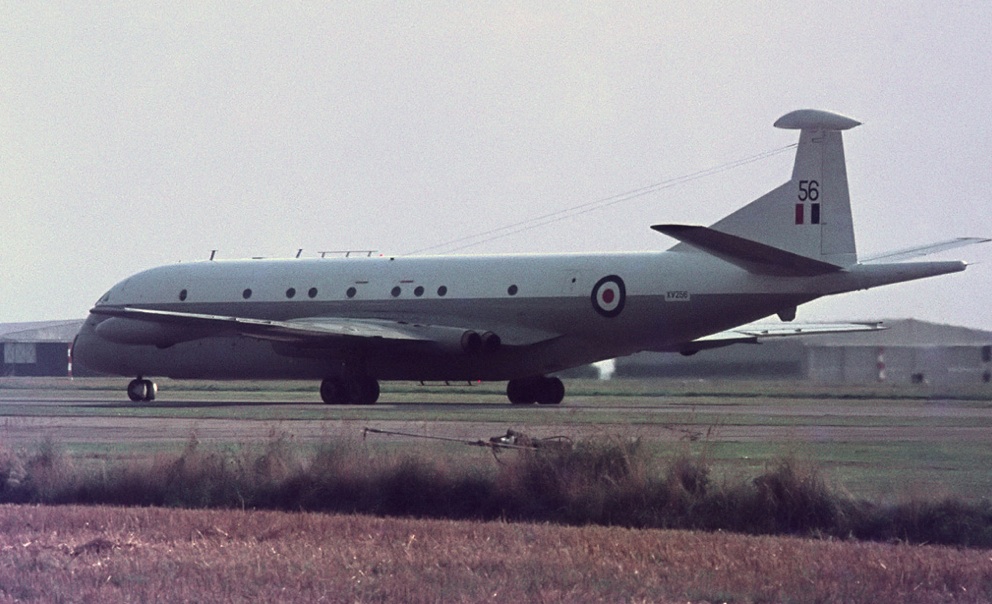Country
Crash of a BAe Nimrod MR.2 near Kandahar: 14 killed
Date & Time:
Sep 2, 2006 at 1547 LT
Registration:
XV230
Survivors:
No
Schedule:
Muscat - Muscat
MSN:
8005
YOM:
1969
Crew on board:
14
Crew fatalities:
Pax on board:
0
Pax fatalities:
Other fatalities:
Total fatalities:
14
Circumstances:
The aircraft departed at 13:43 for a mission over Afghanistan, in support of coalition forces engaging the Taliban. At 15:30 the airplane rendezvoused with an RAF Lockheed TriStar tanker and received fuel in an air-to-air refuelling procedure that lasted 10 minutes. Air-to-air refuelling appeared to pass without incident and XV230's crew prepared to turn east, towards their operational area. Eleven minutes later a bomb bay fire warning, either coincident with, or followed immediately by, an elevator bay underfloor smoke warning, was reported. The crew also reported smoke entering the aircraft’s cabin, from both elevator and aileron bays. Within a minute the aircraft depressurised as the fire breached the aircraft’s pressure hull requiring the crew to don their oxygen masks. The captain began to turn the aircraft towards Kandahar, declared a MAYDAY and began a descent. Meanwhile a crew member reported a fire 'from the rear of the starboard engines'. Another crew member reported a fire within the aileron bay. Last radio contact was at 15:46 when the crew acknowledged the Kandahar weather for landing. About the same time, a Harrier GR7 pilot, who was several thousand feet above, reported an intense fire close to the starboard fuselage and stretching out between where the wing joins the aircraft fuselage to the starboard engine; there was a second fire that stretched behind the aircraft from a point on the side of the rear body of the aircraft. At 15:47 the Harrier pilot reported that he saw the Nimrod explode. It broke into 4 sections, at a height of between 750 feet and 1000 feet. All 14 crew members were killed.
Crew:
F/Sgt Gary Wayne Andrews,
F/Sgt Stephen Beattie,
F/Sgt Gerard Martin Bell,
F/Sgt Adrian Davies,
L/Cpl Oliver Simon Dicketts,
F/Lt Steven Johnson,
Sgt Benjamin James Knight,
F/Lt Leigh Anthony Mitchelmore,
F/Lt Gareth Rodney Nicholas,
Sgt John Joseph Langton,
Sgt Gary Paul Quilliam,
F/Lt Allan James Squires,
F/Lt Steven Swarbrick,
Mne Joseph David Windall.
Crew:
F/Sgt Gary Wayne Andrews,
F/Sgt Stephen Beattie,
F/Sgt Gerard Martin Bell,
F/Sgt Adrian Davies,
L/Cpl Oliver Simon Dicketts,
F/Lt Steven Johnson,
Sgt Benjamin James Knight,
F/Lt Leigh Anthony Mitchelmore,
F/Lt Gareth Rodney Nicholas,
Sgt John Joseph Langton,
Sgt Gary Paul Quilliam,
F/Lt Allan James Squires,
F/Lt Steven Swarbrick,
Mne Joseph David Windall.
Probable cause:
As the Board was unable to investigate XV230's wreckage at the crash site and it proved impossible to recover more than a few small components from the aircraft, the Board has been unable to determine positively the source or cause of the fire which led to the loss of XV230 and its crew. Nonetheless, through investigation of the limited data available, the Board was able to deduce the most probable location of the fire, a number of probable causes of that event and factors which possibly contributed to it:
a. The escape of fuel during AAR, occasioned by an overflow from No 1 tank, or a leak from the fuel system (fuel coupling or pipe), led to an accumulation of fuel within the No 7 tank dry bay. Although of a lower probability, the fuel leak could have been caused by a hot air leak damaging fuel system seals.
b. The ignition of that fuel following contact with an exposed element of the aircraft's crossfeed/ SCP pipe work.
Contributory factors:
a. The age of the Nimrod MR2's non-structural system components.
b. Nimrod MR2 maintenance policy in relation to fuel and hot air systems.
c. The lack of a fire detection and suppression system within the No 7 tank dry bay.
d. The fact that hazard analysis did not correctly categorize the potential threat to the aircraft caused by the collocation of fuel and hot air system components within the No 7 tank dry bay.
e. The formal incorporation of AAR capability within the Nimrod did not identify the full implications of successive changes to the fuel system and associated procedures.
Aggravating factor:
a. The loss of flying controls through fire damage to the hydraulic systems or cables and pulleys.
a. The escape of fuel during AAR, occasioned by an overflow from No 1 tank, or a leak from the fuel system (fuel coupling or pipe), led to an accumulation of fuel within the No 7 tank dry bay. Although of a lower probability, the fuel leak could have been caused by a hot air leak damaging fuel system seals.
b. The ignition of that fuel following contact with an exposed element of the aircraft's crossfeed/ SCP pipe work.
Contributory factors:
a. The age of the Nimrod MR2's non-structural system components.
b. Nimrod MR2 maintenance policy in relation to fuel and hot air systems.
c. The lack of a fire detection and suppression system within the No 7 tank dry bay.
d. The fact that hazard analysis did not correctly categorize the potential threat to the aircraft caused by the collocation of fuel and hot air system components within the No 7 tank dry bay.
e. The formal incorporation of AAR capability within the Nimrod did not identify the full implications of successive changes to the fuel system and associated procedures.
Aggravating factor:
a. The loss of flying controls through fire damage to the hydraulic systems or cables and pulleys.
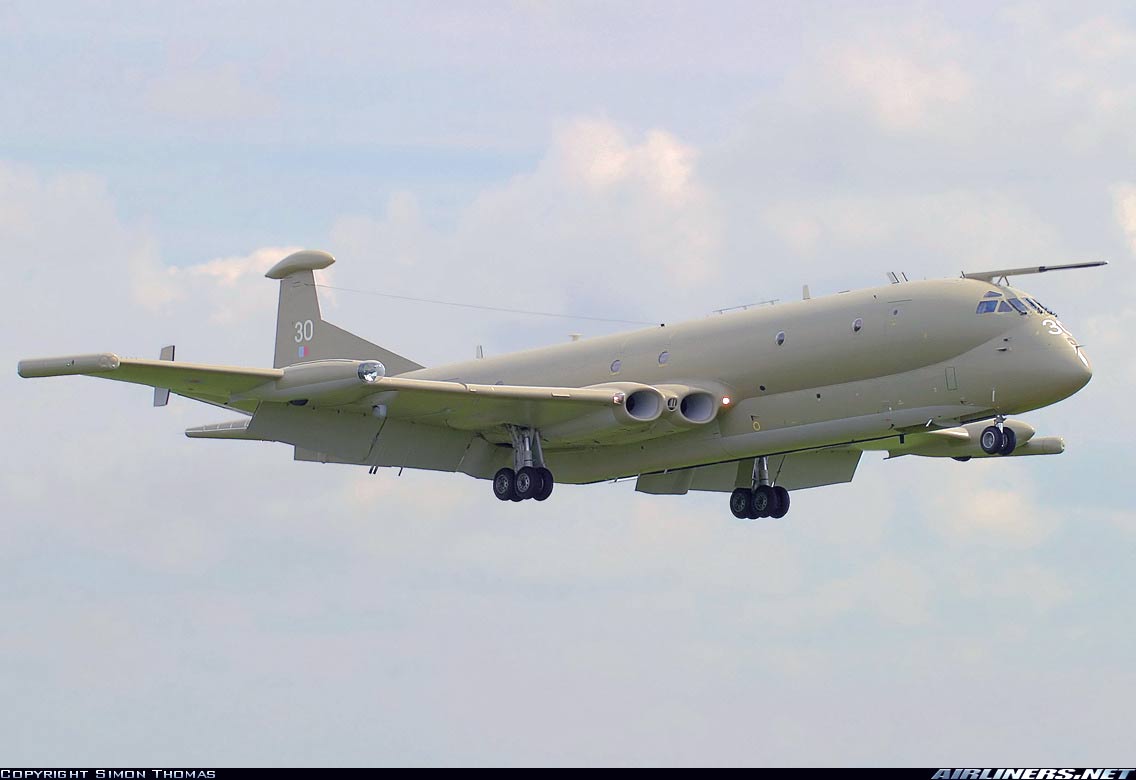

Crash of a BAe Nimrod MR.2P off Toronto: 7 killed
Date & Time:
Sep 2, 1995
Registration:
XV239
Survivors:
No
Schedule:
Toronto - Toronto
MSN:
8014
YOM:
1969
Crew on board:
7
Crew fatalities:
Pax on board:
0
Pax fatalities:
Other fatalities:
Total fatalities:
7
Circumstances:
The Nimrod display aircraft and crew had deployed to Canada on 23 August 1995 for displays at Canadian Forces Base Shearwater and the Canadian International Air Show (CIAS) at Toronto. In excellent weather, with a light on-shore wind, the aircraft took off on time for its display. Upon completion of the safety checks, it ran in for the standard Nimrod display sequence which features two orbits and two dumb-bell turns. The latter manoeuvres each involved a turn away from the display line, a climb to not above 1,000 feet, followed by a turn in the opposite direction and descent, to fly back parallel with the display line. Having completed the two orbits, the first dumb-bell turn was completed uneventfully. After a slow flypast with undercarriage down, the aircraft entered its final manoeuvre, the second dumb-bell turn. It was seen to turn away approximately 75° to starboard under full power before the flaps were retracted to 20° and the undercarriage raised. The nose was then pitched up into a climbing attitude of 24°. As the aircraft passed 950 feet, engine power was reduced to almost flight idle, following which the speed reduced rapidly to 122 knots, below the 150 knots recommended and taught for that stage of the display. The aircraft was rolled to 70° of port bank, shortly afterwards reducing to 45°, and the nose lowered to 5° below the horizon. During this turn the airspeed increased slightly and the G-loading increased to 1 .6 G. However, the combination of the low airspeed and the G-loading led the aircraft to stall, whereupon the port wing dropped to 85° of bank and the nose dropped to 18° below the horizon. Full starboard aileron and full engine power were applied in an attempt to recover the aircraft but, by this stage, there was insufficient height to recover and the aircraft hit the water. All seven crew members were killed.
Probable cause:
The Inquiry determined that the captain made an error of judgement in modifying one of the display manoeuvres to the extent that he stalled the aircraft at a height and attitude from which recovery was impossible. The Inquiry considered that contributory factors could have included deficiencies in the flight deck crew's training and in the method of supervision which could have allowed the captain to develop an unsafe technique without full appreciation of the consequences.
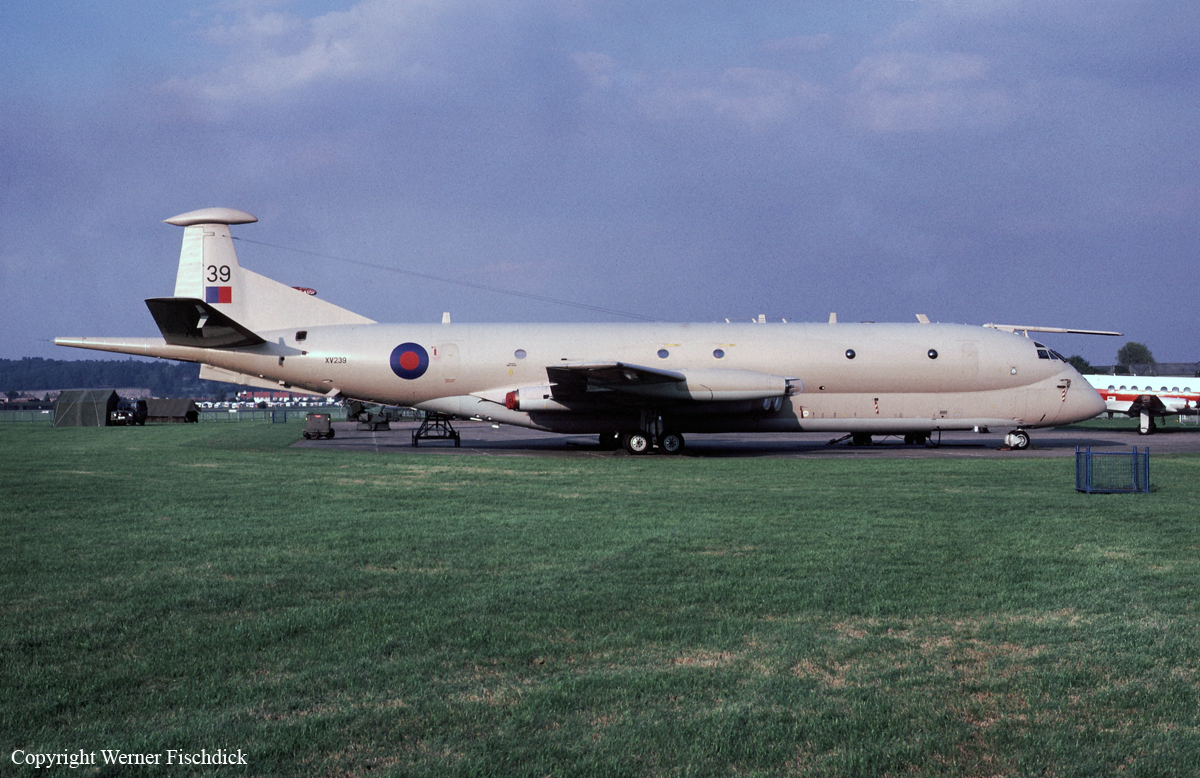
Crash of a BAe Nimrod MR.2 off RAF Lossiemouth
Date & Time:
May 16, 1995
Registration:
XW666
Survivors:
Yes
Schedule:
Kinloss - Kinloss
MSN:
8041
YOM:
1970
Crew on board:
7
Crew fatalities:
Pax on board:
0
Pax fatalities:
Other fatalities:
Total fatalities:
0
Circumstances:
The aircraft was one of three Nimrod reconnaissance variants and had just undergone a major servicing at the Nimrod Major Servicing Unit (NMSU), RAF Kinloss by RAF maintenance personnel. Nimrod XW666 departed on a routine post-servicing airtest. After approximately 35 minutes of flight, following a test of the aircraft's anti-icing system, the No 4 engine fire warning illuminated. Whilst the crew were carrying out the fire drill, the No 3 engine fire warning also illuminated. A rear crew member confirmed that the aircraft was on fire and advised the captain that panels were falling away from the starboard wing. After two explosions, the captain feared for the structural integrity of the aircraft and decided to ditch before he lost control authority. Without the aid of flaps, which failed to operate because of a fire/associated hydraulic failure, he completed a controlled ditching into the Moray Firth. The aircraft bounced twice onto the sea before settling. The fuselage broke into two and the aircraft subsequently sank. Parts were salvaged and the cockpit section is now on display at AeroVenture South Yorkshire Aircraft Museum in Doncaster.
Probable cause:
With the assistance of the Department of Transport's Air Accident Investigation Branch, the Inquiry established that despite the correct application of maintenance procedures, the DC electrical loom attached to No 4 engine had sustained mechanical damage, although it could not be positively determined how or when. Arcing occurred when the engine anti-icing system was switched on and this led to initiation of the air starter system. With the No 4 engine already running at idle as part of the overall airtest there was no load on the starter turbine, which quickly ran up to high speed. The nut holding the turbine disk in place failed, allowing the disk to move back on its shaft and out of its protective housing. It then struck the engine bypass casing and the No 2 fuel tank, puncturing both. The resultant fuel leak was ignited either by electrical arcing within the faulty DC loom or by the heat of the engine. The fire spread rapidly to the wing area and forward to the engine intake area. The Inquiry concluded that a sequence of technical difficulties led to the uncontained fire.

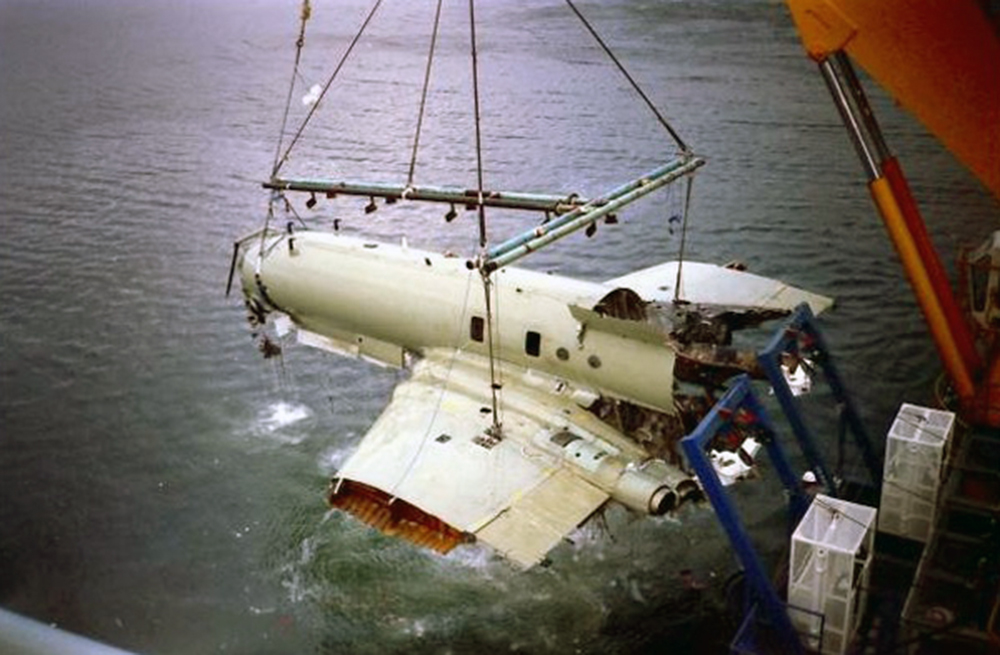

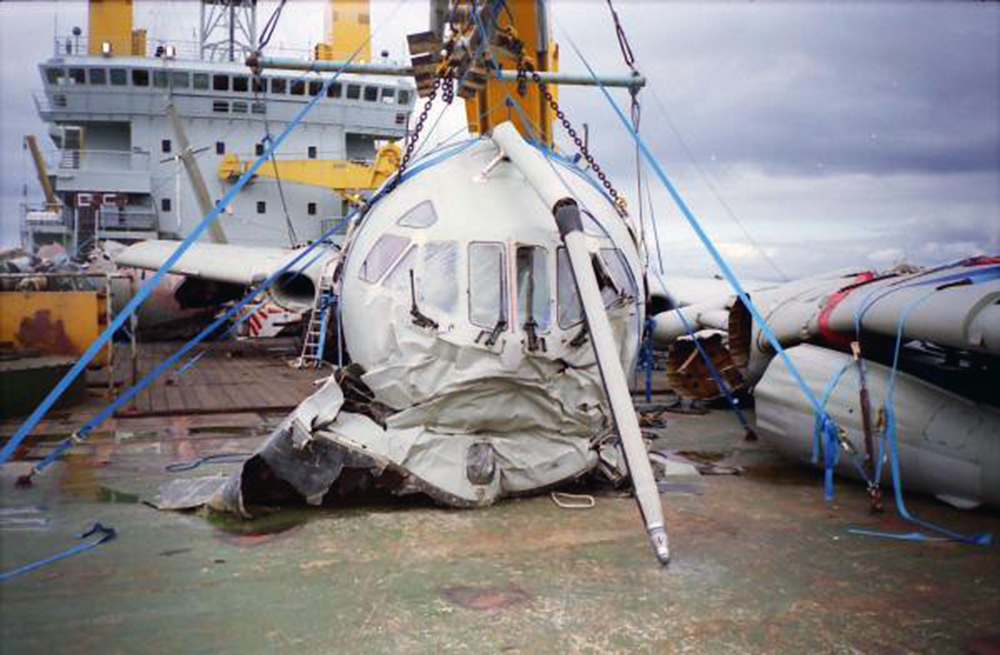
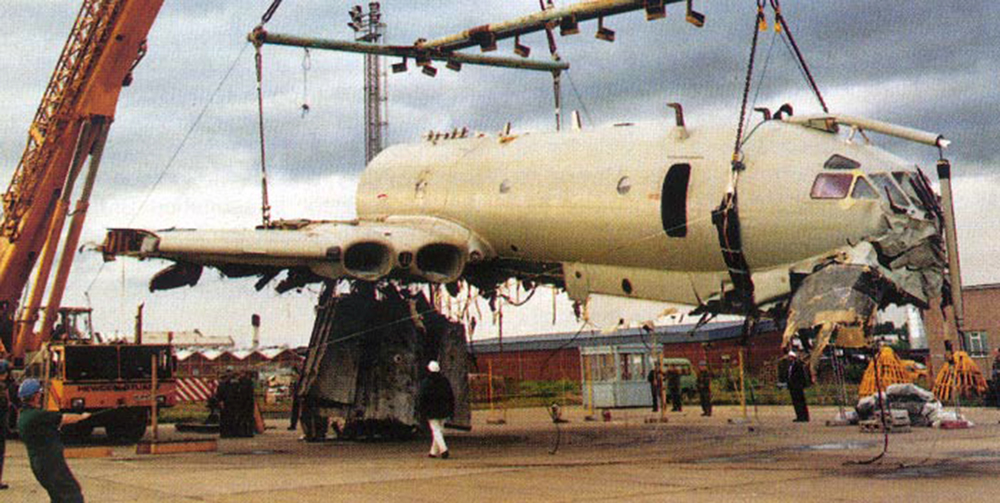
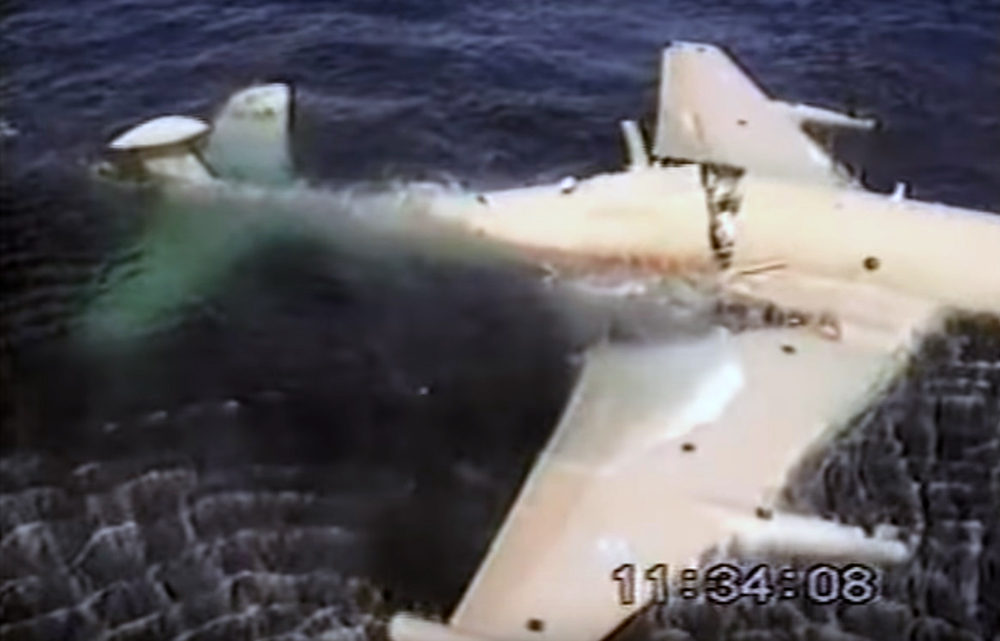
Crash of a BAe Nimrod MR2 in Newquay-Saint Mawgan
Date & Time:
Jun 3, 1984 at 1107 LT
Registration:
XV257
Survivors:
Yes
Schedule:
Newquay-Saint Mawgan - Newquay-Saint Mawgan
MSN:
8032
YOM:
1970
Flight number:
Sarex 51
Crew on board:
13
Crew fatalities:
Pax on board:
0
Pax fatalities:
Other fatalities:
Total fatalities:
0
Circumstances:
The Nimrod aircraft took off on an exercise Search and Rescue (SAR) sortie from its base at RAF St Mawgan. It was carrying in the bomb bay, as part of the SAR equipment, a normal load of 5 inch reconnaissance flares. In accordance with normal practice, the first navigator switched the flare's release units to live shortly after takeoff. Some 30 seconds later a cockpit indicator warned the crew of a fire in the bomb bay. The captain immediately instructed the co-pilot to fly the aircraft back to base while he transmitted a MAYDAY call and informed the rest of the crew. During the return flight ground witnesses saw the Nimrod trailing smoke, with several burning flares, a parachute and other objects falling from the aircraft. The aircraft landed safely. Although the fire services quickly extinguished the intense fire, the aircraft was extensively damaged.
Probable cause:
The accident was caused by a reconnaissance flare becoming detached from its carrier and subsequently igniting in the bomb bay . How it came to be released could not be positively determined.
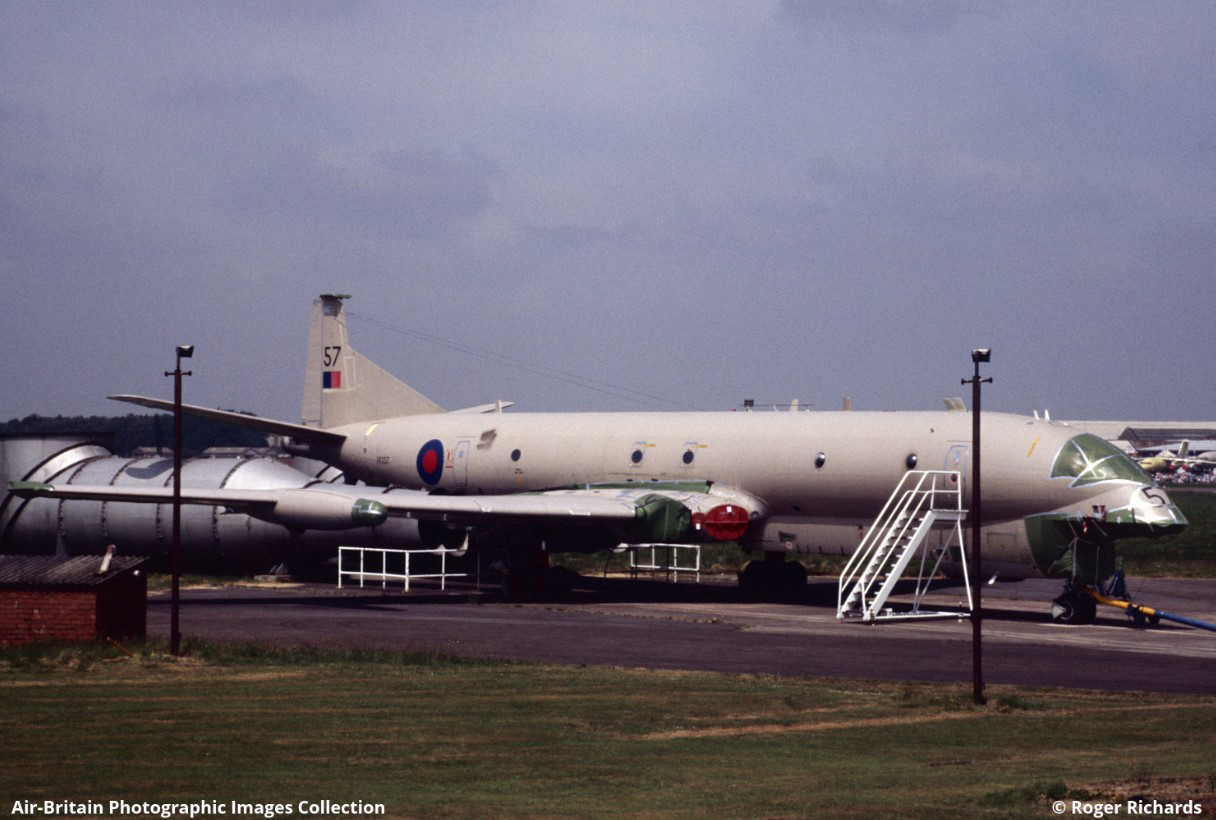
Crash of a BAe Nimrod iMR.2 at RAF Kinloss: 2 killed
Date & Time:
Nov 17, 1980 at 0730 LT
Registration:
XV256
Survivors:
Yes
Schedule:
Kinloss - Kinloss
MSN:
8031
YOM:
1970
Crew on board:
4
Crew fatalities:
Pax on board:
16
Pax fatalities:
Other fatalities:
Total fatalities:
2
Circumstances:
Just before 07:30 a crew took off in semi-darkness on the final sortie of their conversion from the Nimrod 1 to the Nimrod MR2 aircraft. Being the final sortie, the normal crew was increased to 20 by 5 checking crew and an additional Air Engineer. The surface wind was 070 degrees at 02 kts, with 8 km visibility in rain and a main cloud base of 3000 ft. Engine response and indications during the takeoff run were normal, but shortly after takeoff, at an estimated height of 20 ft, the aircraft flew through a dense flock of Canada Geese flying in arrowhead formation between overnight roosting and daily feeding grounds. It suffered numerous bird-strikes. Almost simultaneously the no.1 engine surged violently, suffering a catastrophic internal failure. The low pressure compressors on the nos 2 and 3 engines were also damaged and, although they continued to run, they produced little thrust. Effectively the fully laden aircraft was being powered by only the No 4 engine which itself may have been damaged. Some 27 seconds after takeoff the aircraft came down on the relatively soft tree-tops of a forest of young pine trees 1300 yards from the end of the runway and was quickly engulfed in flames.
Source: ASN
Source: ASN
Probable cause:
The investigation into the accident established, that the cause was a multiple bird strike which occurred at a critical stage of flight. The aircraft suffered such a severe loss of thrust that maintenance of height and flying speed quickly became impossible. It was the captain's skill in keeping the stricken aircraft airborne long enough to make a very smooth and controlled crash at minimum speed into the treetops that undoubtedly saved, the lives of the 18 crew members. After the accident 77 dead sea birds were found on or near the runway. It is not known how many others were ingested by the aircraft engines."
